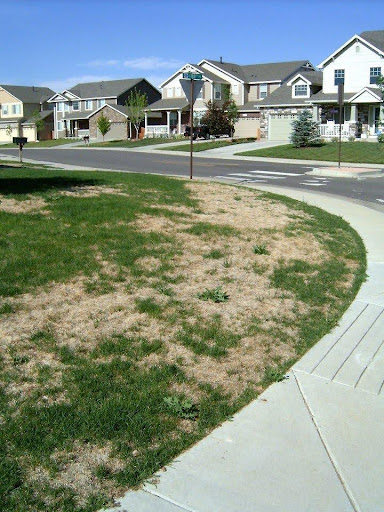Your Cart

LEARN YOUR LAWN: Winter Damage
Request a Quote
What Is Winter Damage?
Winter damage refers to the changes that occur in grasses as a result of harsh winter weather conditions, including extreme cold, snow mold, ice formation, desiccation, and other environmental factors. Winter damage can lead to thinning turf, brown patches, and an overall decline in the health and appearance of the lawn. It can also make the grass more susceptible to disease and insect damage.

How Can I Tell If My Lawn Has Winter Damage?
Here are a few characteristics of Winter Damage:
Discoloration in the grass blades can be the first sign of winter damage. The grass blades may appear yellow, brown, or gray.
Winter damage may cause the grass blades to shrink or shrivel up, appearing dry and lifeless.
Winter damage can cause bare patches in the lawn, where the grass has died and failed to grow back.
Winter damage can cause the grass blades to become matted together, making it difficult for water and sunlight to reach the roots.
Snow mold is a fungal disease that can develop in areas where snow has accumulated on the grass for long periods of time. Snow mold appears as circular patches of brown or gray, matted grass.
How Can I Alleviate Or Prevent Winter Damage In My Lawn?
To minimize winter damage, you can take some preventative winterization steps in the fall. However, in some cases, the damaged areas will need to be renovated with suitable varieties of grass.
Fertilization: Fall is a crucial time to fertilize your lawn. During the cool days of fall, the grass plant slows its top growth and begins storing nutrients and sugars for the months ahead. The plant is building reserves to maintain its health, and this will determine how well it will green up in the early spring. The storing process continues for as long as the plant is green.
Core Aeration: A fall aeration reduces soil compaction and excessive thatch, allowing fertilizer, nutrients, sunlight, and air to be better absorbed in the soil. Aeration also provides an ideal opportunity to apply seed to help maintain a thick, lush lawn for the next season.
Raking: Before winter, it’s very important to remove any large piles of grass and debris that cannot be mulched back into the lawn with your mower. Large quantities of debris will not break down quickly and will damage the lawn by suffocating it and providing a moist home to damaging disease organisms.
Mowing: Raise your mowing height in the fall months to help stimulate additional root growth and allow more water and nutrients to be stored for the winter. During your final mow of the season, lower the mowing height to approximately 2 inches (or 2/3 of your normal mowing height). If you are using a mulching mower, leave the clippings on the lawn to protect the crowns of the plants and provide additional nutrients for the roots to store for winter.
 English (USA)
English (USA) Français (CANADA)
Français (CANADA)